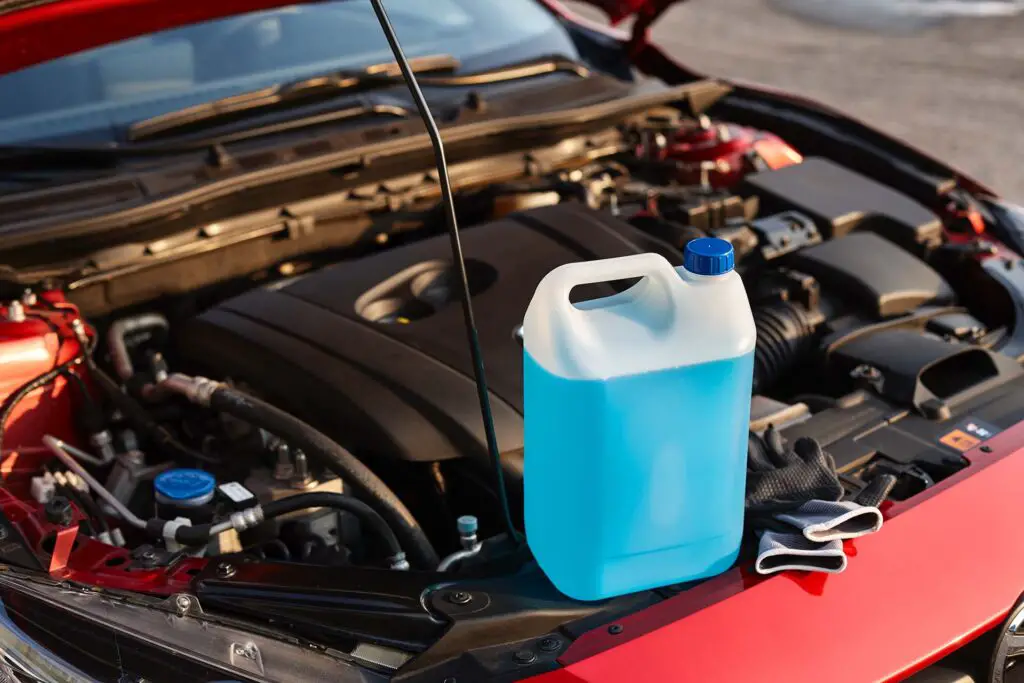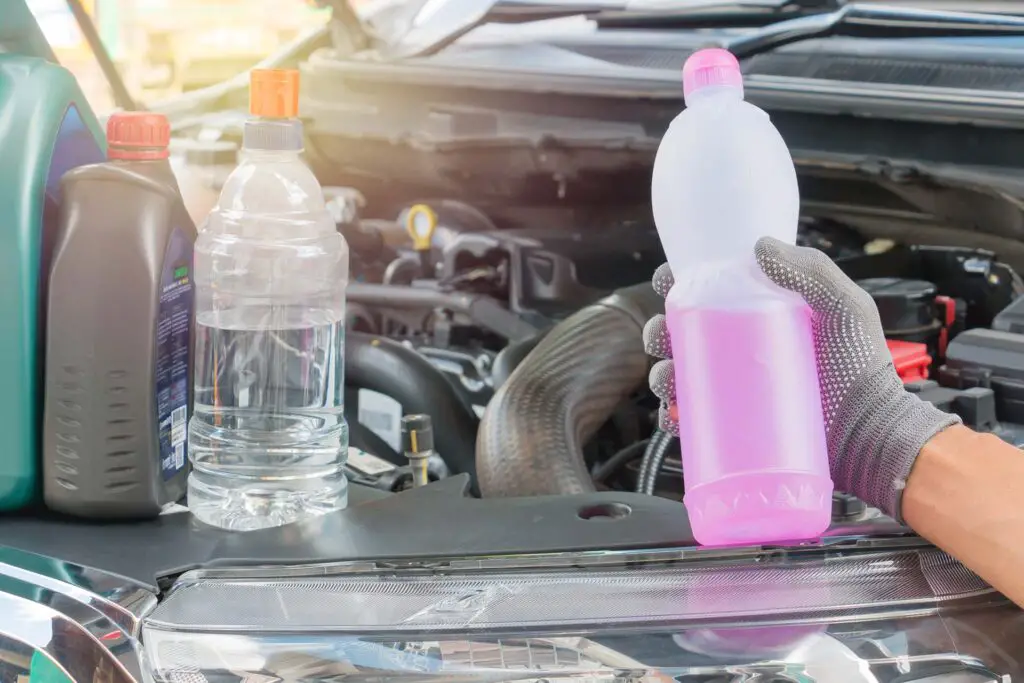Ever found yourself stuck on a frosty morning with a vehicle that won’t start? It’s a situation no one wants to be in, and it all comes down to one crucial question – when is the best time to check the antifreeze in your car? Let’s dive into the ins and outs of this crucial liquid and discover the best times to ensure your engine keeps running smoothly, no matter the weather.
The best time to check the coolant levels in your vehicle is right before winter and summer, as these seasons often entail extreme temperatures. Seasonal changes affect its performance, so it’s important to regularly check your four-wheeler’s cooling system. Recognizing signs of low levels and keeping up with regular maintenance, all while considering the manufacturer’s recommendations, goes a long way in protecting the engine.
What Is Antifreeze and Why Is It Important for Your Vehicle?
Antifreeze, also known as coolant, is a vital fluid for your car’s engine. It’s a mixture of water and ethylene glycol or propylene glycol that circulates through the engine’s cooling system. There are actually various types available on the market:
| Type of Coolant | Mileage | Typical Color |
| Organic Acid Technology (OAT) | 150,000 miles | Dark green, blue, orange, or red |
| Inorganic Acid Technology (IAT) | 36,000 miles | Bright green |
| Hybrid Organic Acid Technology (HOAT) | 30,000 miles | Purple, blue, or pink |
The significance of adding coolant to your four-wheeler is that it allows the engine to operate within the optimal temperature range, preventing both freezing and overheating. This liquid keeps things just right, ensuring that the engine performs as it should, no matter the weather conditions.
The Potential Consequences of Neglecting It Can Be Fatal for Your Engine
Neglecting to monitor and maintain the coolant level and its quality in your vehicle can lead to severe consequences. An engine that overheats can suffer from cracked or warped components, leading to costly repairs or complete engine replacement. In the worst scenarios, a neglected cooling system might even lead to a fire during extreme temperatures.
On the freezing side of things, a lack of coolant can cause the engine to crack, as the liquid might freeze and expand. The takeaway here is clear – proper attention to this aspect of vehicle maintenance isn’t just a matter of convenience. It’s a vital part of keeping your four-wheeler safe and operational.

What Is the Seasonal Impact on Antifreeze?
We’ve already touched upon the consequences that a neglected cooling system can bring during extreme temperatures. But let’s go over the different seasons and their impact on the coolant’s performance:
Engines Are Prone to Overheating During the Summer
In hot weather, engines are more prone to overheating, especially when driving at high speeds or in heavy traffic in one of the cities with the worst drivers. That means the coolant must work harder to dissipate the extra heat generated, keeping the engine nice and cool. If it’s not in good condition, the risk of overheating rises substantially.
Freezing Is a Serious Concern During Winter
Water alone should freeze at 32°F (0°C), but the antifreeze’s role is to lower the freezing point of the mixture, keeping the coolant liquid even in frigid temperatures. Without proper concentration, the coolant could freeze, expand, and cause the engine to crack – that’s certainly not a good way to go about cutting car expenses.
Spring and Fall Bring Fluctuating Temperatures
The mild temperatures of spring and fall might give the impression that coolant is less critical during these seasons. However, fluctuating temperatures can create a challenge for maintaining the engine at its optimal temperature. Regular checks and maintenance remain crucial to prevent potential issues.
When Is the Best Time to Check My Antifreeze?
Checking your coolant levels isn’t just a winter or summer task – it’s a year-round responsibility. However, it’s particularly vital to inspect and possibly adjust the mixture before the onset of extreme temperatures. As a general guideline, you should check the levels at least twice a year – once in the fall, before the cold weather sets in, and once in the spring, before the hotter months.
Routine maintenance goes beyond routine checks. Inspections done by a professional mechanic often include checking for leaks, testing the coolant’s chemical composition, and examining the hoses and other parts of the cooling system for wear and tear. Such routine maintenance ensures that the entire cooling system functions effectively, not only preserving the engine’s lifespan but also enhancing fuel efficiency and performance.

Steps to Check and Maintain Antifreeze
Checking and maintaining the coolant levels in your vehicle isn’t just a task for mechanics – it’s something you can do yourself with a little care and caution. While wearing safety gloves and glasses, here’s how to do it:
- Ensure the engine is cool – never open the radiator cap when the engine is hot, so make sure to wait until it has cooled down to avoid burns,
- Find the radiator cap – locate the radiator cap under the hood, usually near the front of the engine,
- Open the radiator cap – slowly twist the cap off to avoid any pressure release,
- Inspect the coolant – it should be up to the full mark and free of debris or discoloration,
- Check the overflow reservoir – the level should be between the ‘low’ and ‘full’ marks,
- Replace the cap – carefully replace the radiator cap and make sure it’s secure.
Use of a Hydrometer or Coolant Tester for Accurate Readings
For a more precise analysis of the cooling system’s condition, a hydrometer or coolant tester can be incredibly helpful. These devices measure the freezing and boiling points of the coolant, providing an accurate understanding of the mixture’s effectiveness.
To use one, you simply draw some coolant into the tester and read the results. These tools can offer peace of mind by confirming that the mixture in your cooling system is at the correct concentration, protecting your engine in any weather conditions.
What Are the Signs of Low Antifreeze Levels?
Low levels are a serious concern and can be identified by the following symptoms:
- Overheating engine,
- Leaking coolant,
- Unusual sweet smell,
- Warning lights.
Regular checks for wet spots, drips, or crusty residue in the cooling system can help catch leaks before they become serious. If you do notice any of the above signs or a warning light comes on, it’s wise to consult a professional mechanic to inspect and repair the system before any major damage occurs.

Seasonal Antifreeze Maintenance Tips
While checking the levels is crucial, seasonal maintenance is more than that – it’s about ensuring that the mixture is precisely right for the extreme temperatures your vehicle might face, no matter if it’s a small city car or an off-road driving giant.
Winter demands a higher concentration, so consider having a professional mechanic evaluate the coolant’s freezing point to ensure it’s suited for your local climate. Inspection of hoses and belts for wear and tear, as well as repairing any leaks, is critical before the winter kicks in. Besides checking the levels before summer, you should also inspect the cooling fan, water pump, and thermostat for proper operation is vital.
Additional Tips for Coolant System Health
Beyond seasonal adjustment, there are more ways to maintain the overall health of your cooling system. Periodic flushes and replacements are recommended to remove debris and replenish the mixture, as this not only ensures optimal efficiency but also helps in preventing corrosion and buildup inside the cooling system.
Using the manufacturer-recommended product for your specific vehicle is equally important. Different cars have varying requirements, and using the wrong type can lead to compatibility issues, inefficiency, and even damage. Sticking to these guidelines will surely prolong the life of your cooling system, and, in turn, your four-wheeler, providing you with a safer and more reliable driving experience.

When Is the Best Time to Check the Antifreeze in Your Car – Regular Checkups Will Ensure Your Car Runs Smoothly
So there you have it – keeping an eye on the cooling system in your car isn’t rocket science, but it sure is vital. Whether it’s the dead of winter or the height of summer, that trusty mixture is working hard to keep your engine happy. A couple of seasonal checks, a splash of the right stuff, and maybe a professional glance now and then, and you’re cruising. Treat your four-wheeler to those regular checkups, and it’ll reward you with smooth, worry-free rides, no matter what the weather throws at you.
FAQs
When Should I Check My Antifreeze Levels?
Check the levels at least twice a year, before winter and summer, and consider regular professional inspections for optimal performance. Regular monitoring helps ensure that the mixture remains effective against seasonal temperature fluctuations.
How Do I Check Antifreeze Levels Myself?
You can check the levels by inspecting the coolant in the radiator and overflow reservoir when the engine is cool, all while wearing safety glasses and gloves. A visual check for color, level, and any signs of contamination can reveal the coolant’s condition.
What Tools Can Help Me Check Antifreeze Accurately?
A hydrometer or coolant tester provides accurate readings of the antifreeze’s boiling and freezing points. These devices allow for precise adjustments to the mixture, ensuring that it’s appropriately balanced for your specific climate.
What Are Signs of Low Antifreeze Levels?
Signs include an overheating engine, coolant leaks, unusual smells, and warning lights on your dashboard. Early detection of these signs can prevent more significant issues, including serious engine damage.
Should I Use Specific Antifreeze for My Car?
Yes, always use the manufacturer-recommended product for your vehicle to ensure compatibility and efficiency. Using the wrong type may lead to inefficiency and potential damage to the cooling system.
What Are the Benefits of Regular Coolant System Flushes?
Regular flushes remove debris, prevent corrosion, and maintain the cooling system’s efficiency. This process helps prolong the life of this component and keeps the engine operating at its best.
Can I Mix Different Types of Antifreeze?
No, mixing different products can lead to compatibility issues and reduce the cooling system’s effectiveness. Always follow the manufacturer’s guidelines and consult with a professional if you’re unsure, as improper mixing can have long-term negative effects on your vehicle.








